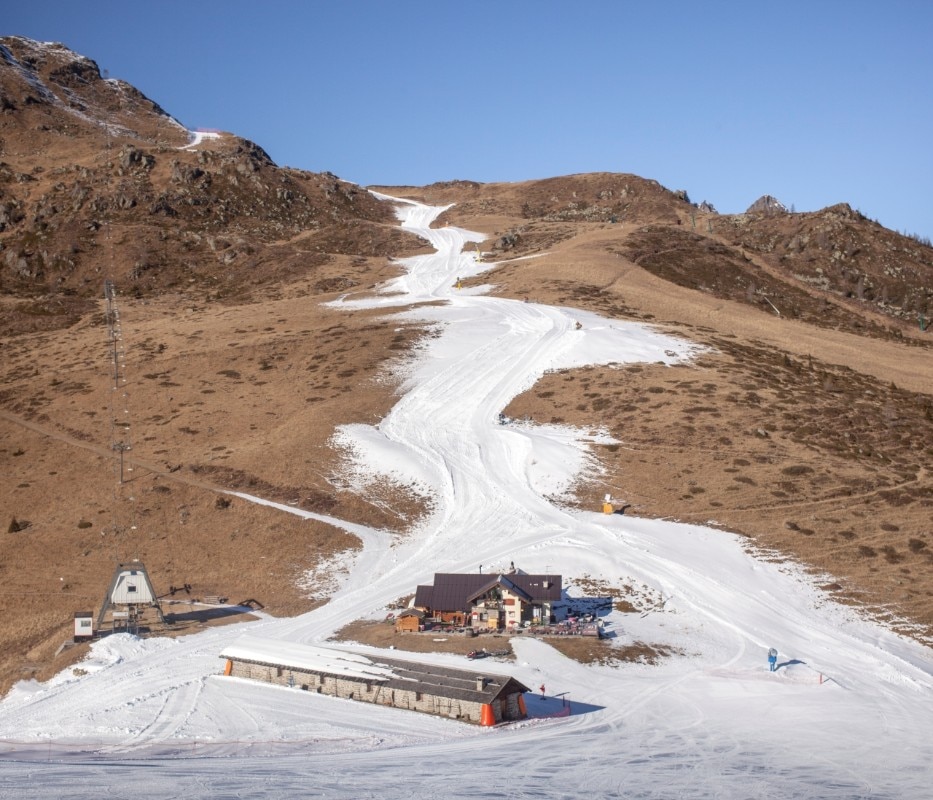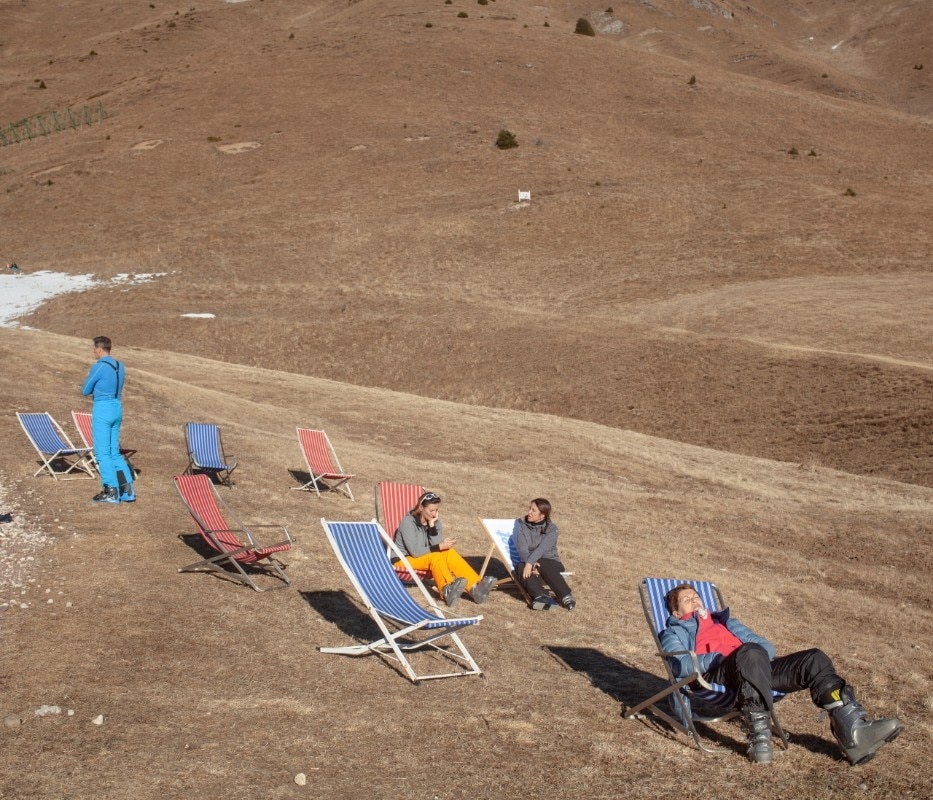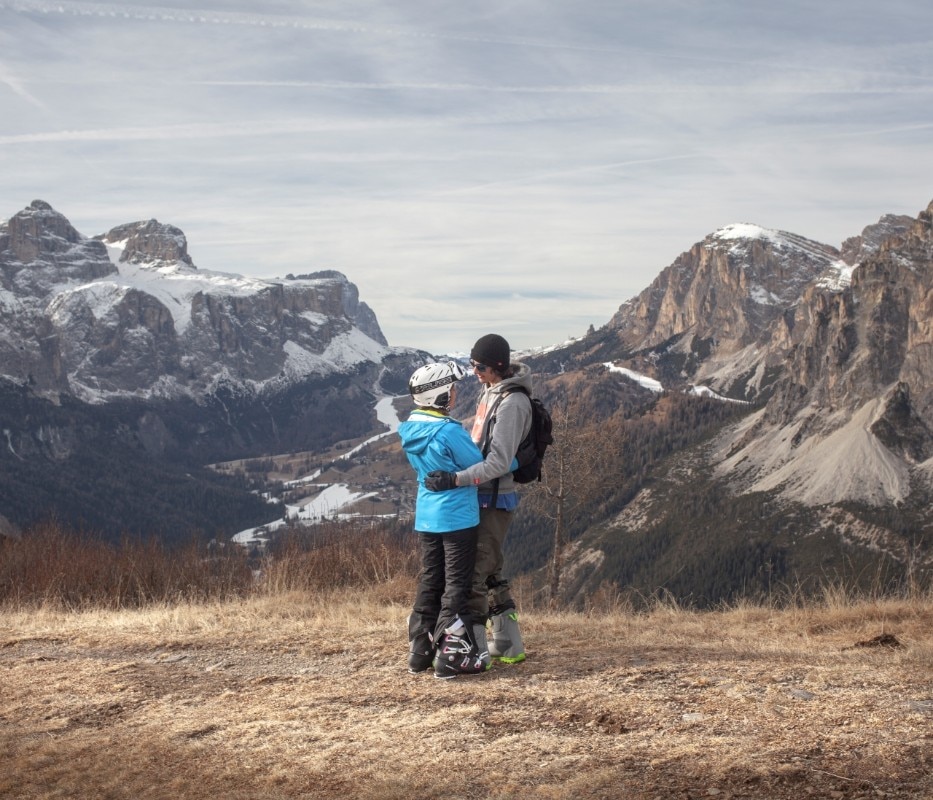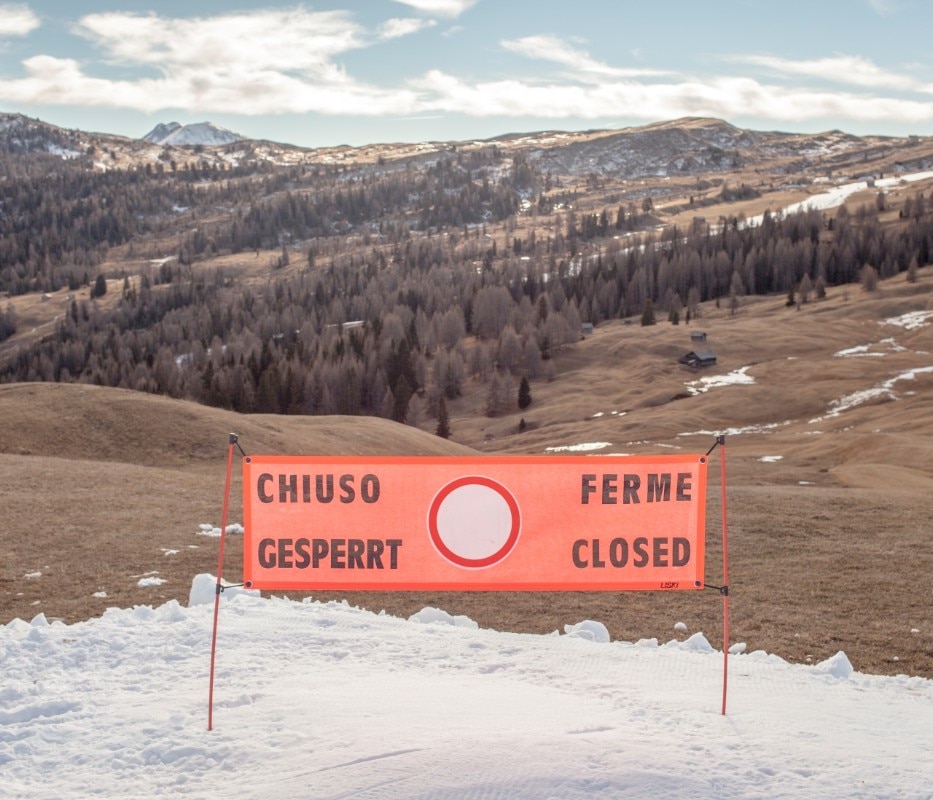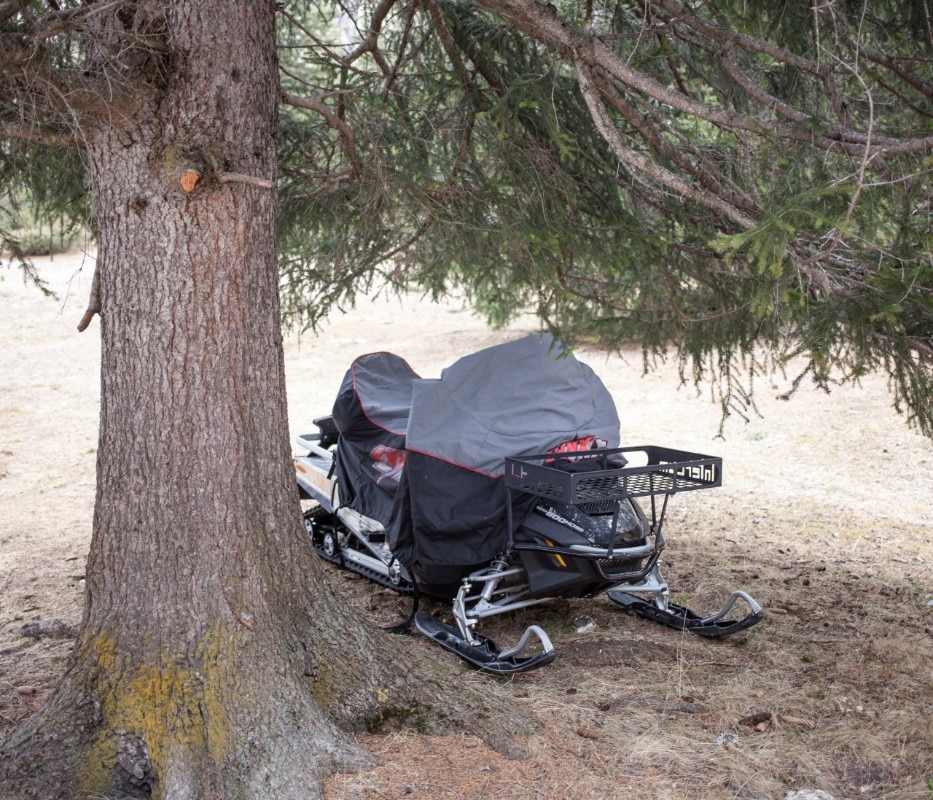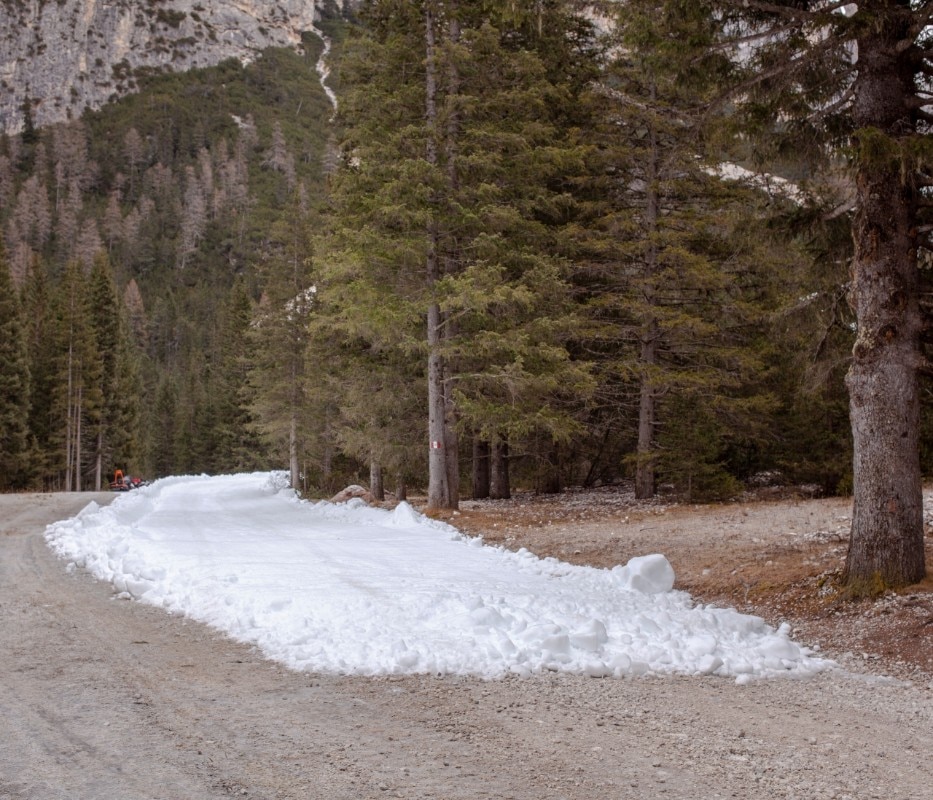Climate change is increasingly impacting on where and when we can go skiing. European ski resorts, from the Pyrenees to the Alps, were on the verge of adapting to the absence of snow as 2015 and 2016 reached an all-time high heat-record, according to the World Meteorological Organization. Previously white slopes and cross-country ski tracks in the European hemisphere stay green up to nine months of the year.
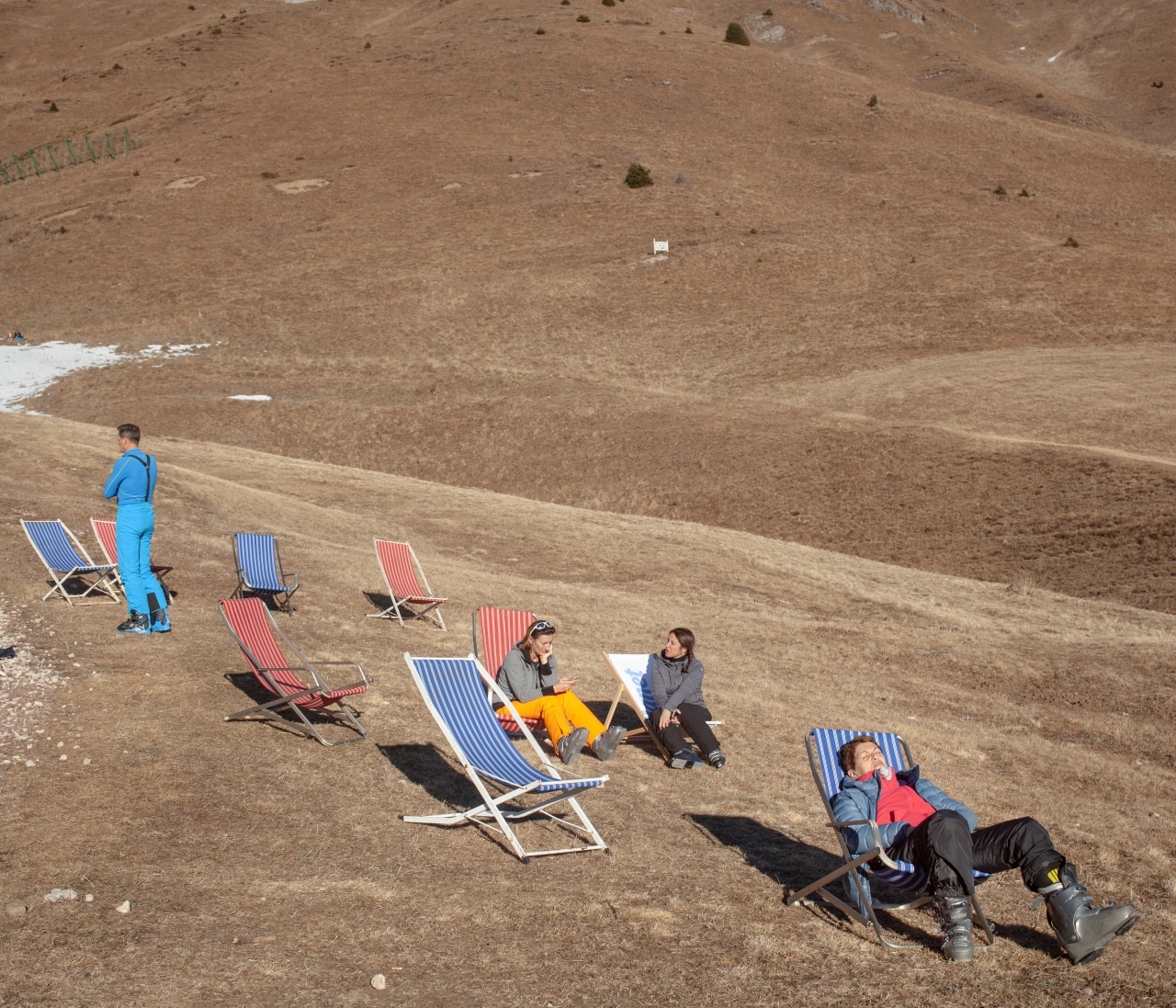
The “greening” of 2,000 metre-high mountaintops is alarming and brings the absurd view of world-class skiers transiting across a summery Dolomiti landscape on a strip of synthetically produced snow. In the absence of snow at previously prosperous ski-tourism resorts, fanciful options are emerging to prevent the end of winter and their economic collapse. One such invention is the production of artificial snow. Not only do ski resorts such as Dolomiti Superski provide artificially produced snow to 1200 km of their ski slopes but the market value of snow is now a concern for ski resorts in northern European countries such as Sweden.
Winter in the Nordic countries has long equated with cross-country skiing, which remains a popular sport. The Swedish Vasaloppet – a 90km ski race – is on the bucket list of many, from elite professionals to midlife-crisis amateurs. Its Italian counterpart is the Marcialonga, a 70-km cross-country ski race. The organisation behind Vasaloppet, which has grown from one race to a whole week of them, attracting some 65,000 skiers per year, has upgraded its organisation and literally transitioned from its main activity of coordinating people to coordinating snow, i.e. producing, storing and distributing snow. Moreover, in 2017, Vasaloppet announced that, after several years of research and in collaboration with the University of Bad Gastein, the organisation was proudly presenting a completely new snow composition that lasts up to 12 times longer than normal artificial snow.
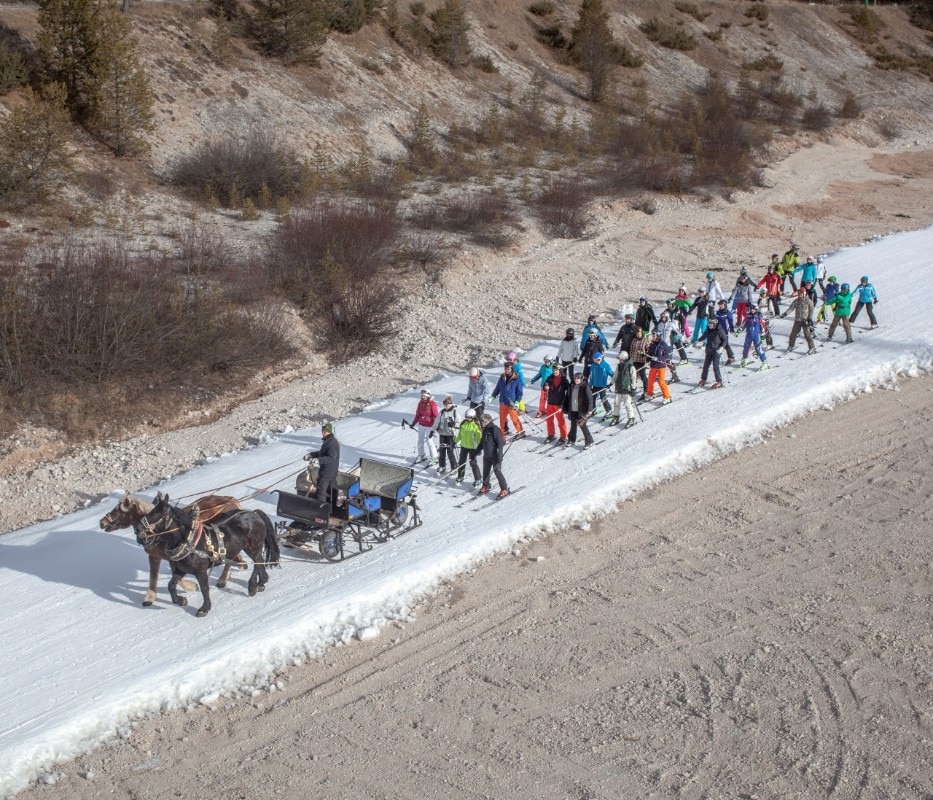
The production method consists in a specially designed snow-cannon
filter that changes the molecular composition of the snow to make it last longer. Research into producing better artificial snow than real snow may be an economical solution but what are the overall consequences? If there is no real snow, will it be the end of skiing as a popular sport and form of exercise? The public will not be able to afford to exercise by skiing when snow is only made available and managed by private companies. Who can afford to train for long-distance skiing when the snow is only available at certain facilities?
Although the molecular composition of snow has changed, we are taken aback by broadcasts of World Cup skiers sliding out of the ski port and missing the blue line guiding them down the slope, or when watching exhausted cross-country skiers who fall in a sharp curve towards the finish-line. This is the new truth of professional skiers battling a snow consistency that is more a composition of foreign molecules than like anything we are used to calling snow. The lengthy experience of trained skiers has to cope with a new material that looks like snow but does not act like snow.
Skiing is not affected only by snow consistency. Major steps must be taken to make it a sustain- able sport. As a competitive practice, in personal terms it absorbs some 200 travel days per year. The elite skier’s dilemma is a dependency on snow and the fact that they must travel if they are to compete but travel contributes to global warming and the snow meltdown. Ski tourism is having the same impact and flying to distant ski resorts such as Aspen in the USA or Bariloche in Argentina is not a viable option.
Research into producing better artificial snow than real snow may be an economical solution but what are the overall consequences? If there is no real snow, will it be the end of skiing as a popular sport and form of exercise?
It is clear that the market value of snow is driving ski tourism in an unsustainable direction. At one of Sweden’s southernmost ski resorts, serving the hub of avid skiers in the Stockholm area, the unusually mild weather does not affect the ski resort as it is completely operational without real snow. The artificially produced snow lasts the whole winter and even extends the season. Real snow “only sprinkles down as decoration” says the founder of the Romme Alpin ski resort. For a small ski resort of 5,000-6,000 visitors per day, this is like a game but you wonder whether this really is a sustainable winter-making format in ski resorts that attract some 630,000 skiers per hour, such as Dolomiti Superski?
There are small signs of positive action, in which large media events can play a crucial role. One of the two world ski championships hosted in Sweden this year, the IBU Biathlon World Championships, took strong measures to reduce the major environmental impact of ski competitions by investing in a fossil fuel-free competition. Among other things, the organisation banned the diesel units often used to heat tents and temporary structures for the event. They also offered alternative travel arrangements by train for visitors, promoting a sustainable substitute to air travel as the event was situated in the rural wooded landscape and town of Östersund, in the middle of Sweden.
In the absence of snow, the reasoning behind relocating ski resorts farther north in countries such as Sweden, Norway and Finland is not as intuitive. Rather, there is an emerging tendency to invest in producing artificial snow. For a winter-lover, this sounds absurd. All the more irrational is the pouring of investments into stretches of concrete runways in the middle of nowhere but this is a reality.
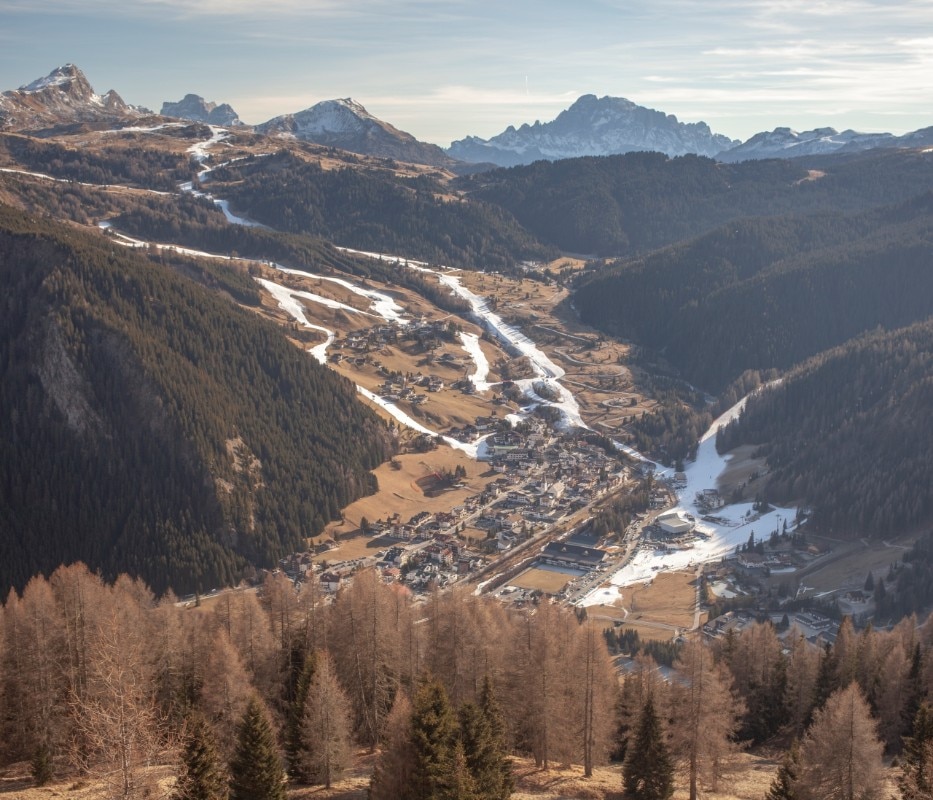
Skistar has been building the Scandinavian Mountains Airport, which will open for air traffic this year. Owned by Skistar which has expanded in 20 years from having a couple of lifts in Sälen to being a European power player in ski tourism, the privately-owned airport has benefited from a government subsidy of one quarter of a billion Swedish kronor. Is this sheer madness? Well, the Scandinavian Mountains Airport company, which serves ski resorts with a maximum drop height of 685 metres, aims to have 350,000 passengers passing through its terminal gates annually and to become a serious competitor at European level. Despite its lack of real snow, the tourist flow to this smallish ski resort in rural Sweden has increased in recent years.
Frida Rosenberg a lecturer at KTH Royal Institute of Technology School of Architecture in Stockholm and writes on shifts and transformations in the Swedish built environment from a historical perspective.
This article draws on media sources including Svenska Dagbladet, The New York Times and World Cup biathlon, downhill and cross-country skiing broadcasts by Swedish television.


